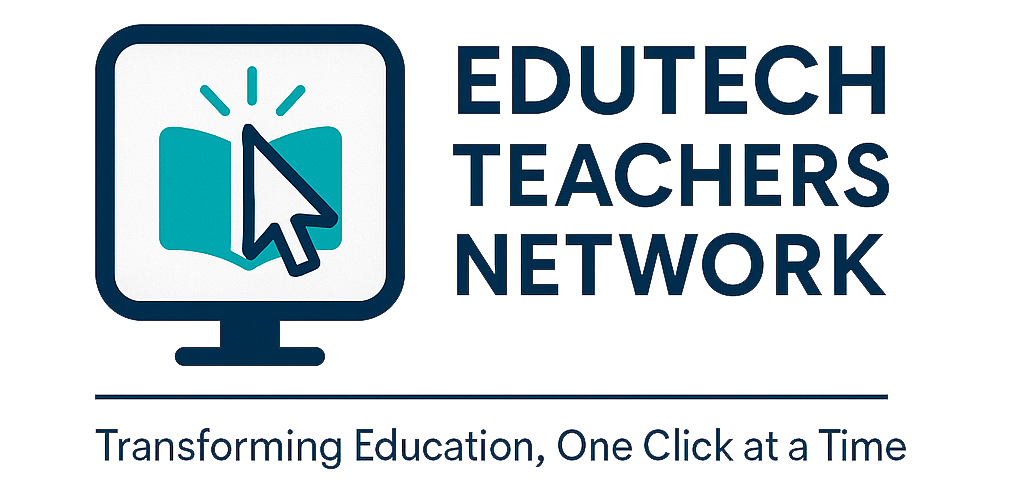Managing School ICT Inventory: Best Practices and Tools
Introduction
Imagine Mr. Okello, a dedicated mathematics teacher at a bustling secondary school in Kampala, Uganda. Every morning, he arrives at the ICT lab ready to inspire his students with interactive simulations on geometry using free online tools. But frustration sets in when he discovers that half the laptops are missing some borrowed without records, others tucked away in storage after a hasty repair. The projector, a vital asset for his lessons, has been gathering dust because no one knows its maintenance schedule. Sound familiar? In schools across Uganda and much of Africa, where ICT integration is transforming education but resources are often stretched thin, stories like Mr. Okello’s are all too common. Effective management of school ICT inventory isn’t just about keeping track of gadgets; it’s the backbone of sustainable digital learning, ensuring that tools like computers, projectors, and software licenses enhance teaching rather than become a headache.
As educators in Uganda navigate the push towards a competency-based curriculum that emphasizes digital skills, managing ICT inventory becomes crucial. The Ministry of Education and Sports has long advocated for ICT in schools, yet many institutions struggle with accountability, leading to wasted funds and uneven access for students. This article builds on our earlier discussion in “Why Every School Needs an ICT Policy (and How to Create One),” where we explored the foundational role of policies in guiding ICT use. Here, we dive deeper into the practical side: inventory management. Drawing from real-world experiences in African schools and insights from the Sharebility EduTech Course specifically Module 3.1 on Developing and Implementing School ICT Policies we’ll uncover best practices and tools tailored for low-resource settings. Whether you’re an ICT patron in a rural upcountry school or a headteacher in an urban center like Entebbe, these strategies will help you turn chaos into control, maximizing every shilling invested in technology.
In the sections ahead, we’ll examine the essentials of ICT inventory, the unique challenges faced by Ugandan teachers, proven best practices with local adaptations, and accessible tools that won’t break the bank. By the end, you’ll have a roadmap to implement changes that not only safeguard your school’s assets but also empower teachers like Mr. Okello to focus on what they do best: igniting curiosity in young minds.
Understanding ICT Inventory in Schools
At its core, ICT inventory management refers to the systematic tracking, maintenance, and optimization of all technology-related assets in a school from hardware like desktops, laptops, and interactive whiteboards to software licenses, peripherals such as mice and keyboards, and even connectivity tools like routers and modems. In the context of Ugandan schools, where the student-to-computer ratio can exceed 10:1 in many public institutions, this isn’t merely administrative busywork; it’s a lifeline for equitable education. According to a study on ICT adoption in Ugandan schools, poor inventory practices lead to underutilization of available resources, exacerbating inequalities between urban and rural learners.
Why does this matter so much in Africa? Across the continent, education systems are rapidly digitizing, spurred by initiatives like the African Union’s Digital Transformation Strategy for Africa (2020-2030), which calls for widespread ICT integration to bridge the digital divide. In Uganda, the National ICT Policy in Education (2019) mandates schools to maintain inventories as part of accountability for government-donated equipment. Yet, without proper management, assets depreciate quickly think of solar-powered chargers rusting in humid storerooms or outdated software slowing down lessons on basic algebra.
Effective inventory management goes beyond listing items; it involves lifecycle oversight: acquisition, deployment, usage monitoring, maintenance, and disposal. For instance, in a typical Ugandan primary school, inventory might include 20 refurbished laptops donated by a local NGO, a few projectors for assembly halls, and shared internet hotspots. Managing this ensures compliance with policies, prevents theft (a rampant issue in under-secured labs), and supports budgeting for upgrades. As highlighted in the Sharebility EduTech Course Module 3.1, a well-implemented ICT policy includes provisions for inventory tracking to foster a digital culture among staff, directly linking policy to practice.
Consider Ms. Nakato, a science teacher in Gulu, northern Uganda. Her school’s modest ICT setup five computers and a printer once sat idle because no one tracked usage. After introducing simple logging sheets, she now rotates devices among classes, allowing more students to experiment with virtual labs. This shift not only boosted engagement but also extended the lifespan of the equipment. In essence, robust inventory management democratizes access, aligning with the inclusive ethos of African education reforms. It prepares students for a job market where digital literacy is non-negotiable, turning potential e waste into enduring educational tools.
Challenges in Managing ICT Inventory in Ugandan Schools
Ugandan teachers and administrators face a perfect storm of hurdles when it comes to ICT inventory. Resource scarcity tops the list: Many schools operate on shoestring budgets, with intermittent electricity and unreliable internet making it hard to maintain digital records. A report on ICT utilization in Ugandan secondary schools notes that high student-computer ratios often 50:1 or worse lead to overuse and rapid wear, compounded by a lack of trained personnel to handle repairs. In rural areas like those in Karamoja, dust and power surges from generators further degrade hardware, while urban schools in Kampala grapple with theft amid growing device value.
Another thorn is the human element. Teachers, overburdened with large classes and limited CPD (Continuous Professional Development), often view inventory as an extra chore rather than a priority. The same study reveals that without clear guidelines, borrowing becomes haphazard devices vanish into staff rooms or student homes, only to resurface damaged. Policy implementation lags too; while the Ministry provides frameworks, enforcement is weak, leading to fragmented systems where headteachers rely on manual ledgers that are prone to errors and loss.
Cultural and infrastructural barriers amplify these issues. In many African contexts, including Uganda, there’s a digital divide: Female teachers and those in remote schools report even less access to training on inventory tools. Solutions? Start with awareness. Partnering with organizations like the EduTech Teachers Network can provide workshops on basic tracking. For power issues, invest in low-cost UPS (Uninterruptible Power Supplies) or solar backups, as seen in pilot projects in Kenyan schools adaptable to Uganda. Addressing theft requires community buy-in parent-teacher associations monitoring labs have reduced losses by 40% in some Nairobi schools, a model ripe for Ugandan adoption.
Ultimately, these challenges aren’t insurmountable. By viewing inventory as an investment in equity, schools can turn obstacles into opportunities, ensuring ICT serves all learners, from the bustling streets of Jinja to the quiet hills of Fort Portal.
Best Practices for Managing School ICT Inventory
Turning challenges into triumphs requires actionable strategies grounded in best practices. Drawing from global standards adapted for African realities, here are key approaches to elevate your school’s ICT inventory management.
First, establish a centralized system. Ditch scattered notebooks for a single repository be it a shared Google Sheet for small schools or dedicated software for larger ones. This transparency prevents duplication and ensures real-time visibility. In Uganda, where audits by the Inspectorate of Government are routine, centralization aids compliance and quick reporting.
Second, conduct regular audits. Schedule quarterly physical checks: Tag assets with unique IDs (e.g., QR codes on laptops) and verify against records. Best practice dictates auditing at term starts and ends, cross-referencing with usage logs. For maintenance, monitor depreciation computers lose 30-40% value annually and plan budgets accordingly. In a low-resource Ugandan context, involve students in “inventory clubs” to foster ownership, as trialed successfully in Tanzanian schools.
Third, implement clear check-in/check-out procedures. Use simple forms or apps to log borrowings, specifying duration and purpose. Establish SOPs (Standard Operating Procedures) for handling: Who approves? What happens if overdue? This reduces losses, as evidenced by U.S. K-12 districts where such processes cut unaccounted devices by 50% a transferable lesson for African educators.
Fourth, categorize and tag assets. Group items by type (hardware, software, peripherals) and location (lab, admin, storage). Use durable labels resistant to Uganda’s humid climate. Integrate with school software for seamless updates, like linking to attendance systems to track classroom usage.
Fifth, prioritize maintenance and training. Create schedules for cleaning, updates, and repairs—partner with local technicians for cost savings. Train staff via free online resources, emphasizing cybersecurity to prevent malware wiping data.
To illustrate, here’s a table summarizing these best practices with Ugandan adaptations:
| Best Practice | Description | Ugandan Adaptation | Expected Benefit |
| Centralized System | Single database for all assets | Use free Google Workspace for Education train one ICT focal person | Reduces errors by 70%; easy audits |
| Regular Audits | Quarterly physical verifications | Involve PTA volunteers; align with term reports | Prevents theft; ensures 90% uptime |
| Check-In/Out Procedures | Logged borrowing system | Simple WhatsApp group for approvals in rural areas | Cuts losses by 40%; promotes accountability |
| Categorization & Tagging | Group and label assets | QR codes via free apps like QR Code Monkey; weatherproof tags | Quick scanning even offline; lifecycle tracking |
| Maintenance & Training | Scheduled upkeep and staff skills | Partner with Sharebility Uganda for workshops; solar maintenance kits | Extends asset life by 2- |

By adopting these, schools like St. Mary’s in Mbarara have transformed their ICT labs from disorganized spaces to hubs of innovation, where teachers confidently deploy tools without fear of loss.
Recommended Tools for ICT Inventory Management
In resource-constrained environments, affordability is key. Fortunately, free and open-source tools abound, designed for scalability in developing countries.
Start with InvenTree, an open-source inventory system ideal for schools. It tracks parts, stock levels, and suppliers via a web interface, supporting offline modes for Uganda’s spotty internet. Customize it for ICT assets—log serial numbers, assign to users, and generate reports. As noted in open-source reviews, it’s perfect for non-profits like schools, with no licensing fees.
For broader school management, GegoK12 offers a free ERP including inventory modules. Tailored for African education, it handles asset tracking, depreciation, and even integrates with student databases. Ugandan schools using similar ERPs report 30% better resource allocation.
Odoo’s Inventory app is another gem—community edition is free, covering stock tracking, barcoding, and alerts for low supplies. Its mobile app suits on-the-go audits in large compounds, and it’s used in Kenyan schools for supply chain management adaptable to ICT.
For asset-focused needs, OpenBoxes provides real-time tracking for hardware, with features for maintenance scheduling. It’s open-source and excels in low-bandwidth settings, as piloted in health supply chains but extensible to education.
Basic options like Google Sheets with add-ons (e.g., Asset Tracker) work for starters free, collaborative, and integrable with Forms for check-outs. In a Jinja school trial, this simple setup reduced discrepancies by 25%.
Choose based on scale: Sheets for under 50 devices; InvenTree for growing labs. Always prioritize user-friendly tools with local support Sharebility Uganda offers training to ease adoption.
A Local Example: Success in Action
Take the case of Nakawa High School in Kampala. Facing frequent laptop disappearances, the ICT patron introduced InvenTree alongside QR tagging. Audits became monthly affairs, and maintenance logs prevented breakdowns during exams. Student involvement via an EduTech club not only tracked usage but sparked projects like app development. Within a year, device utilization rose 60%, proving that with the right practices, even modest investments yield big returns.
Conclusion
Managing school ICT inventory is more than paperwork—it’s a commitment to equitable, innovative education in Uganda and Africa. From centralizing records to leveraging free tools like InvenTree and GegoK12, the best practices outlined here empower teachers to overcome challenges like theft and scarcity. As Mr. Okello and Ms. Nakato illustrate, diligent management unlocks potential, aligning with national policies and the Sharebility vision of digital transformation.
Don’t wait for the next audit surprise. Start small: Audit your lab today, tag assets tomorrow. For deeper policy insights, revisit our guide on creating an ICT policy. Join the EduTech Teachers Network to connect with peers and access resources. Together, we’re building schools where technology serves every learner, one tracked asset at a time. Your students’ future depends on it.



Leave a Reply